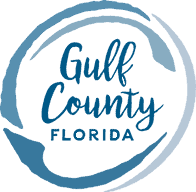Safe boating practices are crucial for anyone navigating the waters in Port St. Joe. Whether you are a seasoned boater or a novice, it is important to understand the guidelines and techniques that ensure a safe and enjoyable boating experience. This comprehensive guide will provide you with essential tips on boat handling, water safety precautions, navigation rules, life jacket regulations, boat maintenance, and more. By mastering these safe boating practices, you can confidently explore the beautiful waters of Port St. Joe while minimizing the risk of accidents or mishaps.
Key Takeaways:
- Follow boating safety guidelines and responsible boating measures to minimize the risk of accidents and injuries.
- Ensure you have the essential boating safety gear, such as life jackets, navigation lights, distress signals, and fire extinguishers.
- Master boat handling techniques for maneuvering, docking, anchoring, and navigating narrow channels.
- Understand and follow navigation rules, including boating right-of-way and the meaning of navigation markers, buoys, and beacons.
- Adhere to life jacket regulations and fit them properly for maximum safety.
Understanding the Importance of Safe Boating Practices
Safe boating practices are crucial for the well-being of all boaters and passengers on the water. By adhering to boating safety guidelines and implementing responsible boating measures, you can significantly reduce the risk of accidents and injuries. It is essential to understand the importance of safe boating practices to ensure a secure and enjoyable boating experience.
One of the key aspects of safe boating practices is wearing proper life jackets. Life jackets provide essential buoyancy and can save lives in case of an unexpected incident. Always ensure that you and your passengers wear suitable life jackets that are Coast Guard-approved and properly fitted.
Following navigation rules is another crucial aspect of safe boating. These rules govern the right-of-way, preventing collisions and ensuring smooth traffic flow on the water. Familiarize yourself with navigation markers, channel markers, buoys, and beacons to stay on the correct path.
Maintaining your boat properly is also essential for safe boating. Regular inspections, engine maintenance, electrical system check-ups, and proper hull maintenance contribute to a reliable and seaworthy vessel.
Practicing water safety precautions is vital to protect yourself and others on the water. This includes monitoring weather conditions, checking tides and currents, wearing appropriate clothing, and staying hydrated.
By embracing responsible boating measures, you play a significant role in boating accident prevention. This involves practicing defensive boating, maintaining situational awareness, abstaining from alcohol consumption while boating, and observing speed limits.
Understanding and implementing these safe boating practices not only ensure your safety but also contribute to the overall well-being of the boating community and the marine environment. Together, we can enjoy the thrill of boating while minimizing the risks.
Essential Boating Safety Gear

When it comes to boating, safety should always be a top priority. Having the right boating safety gear can make all the difference in ensuring a safe and enjoyable trip on the water. Here are some essential safety equipment items that every boater should have on board:
- Life Jackets: Life jackets are a must-have for everyone on board, regardless of age or swimming ability. Make sure you have enough properly fitted life jackets for each passenger. In case of an emergency, life jackets provide vital flotation and can save lives.
- Navigation Lights: Navigation lights are essential for ensuring visibility and avoiding collisions, especially during low light conditions or at night. Make sure your boat is equipped with the necessary navigation lights to comply with regulations and signal your presence to other boaters.
- Distress Signals: Distress signals are crucial for calling for help in case of an emergency or when you need assistance. These signals can include flares, distress flags, or an emergency locator beacon. Familiarize yourself with the proper use of distress signals and keep them easily accessible on your boat.
- Fire Extinguishers: Fire extinguishers are essential for preventing and handling fires on your boat. Make sure you have the appropriate type and size of fire extinguishers for your vessel, and ensure they are regularly inspected and in good working condition.
By ensuring you have these essential boating safety gear items on board, you can be well-prepared for any situation that may arise while out on the water. Remember, safety should always come first.
Next: Mastering Boat Handling Techniques
Mastering Boat Handling Techniques
Properly handling a boat is crucial for safe and efficient navigation on the water. To become a skilled boater, you need to master various boat handling techniques that will enable you to maneuver, dock, anchor, and navigate through narrow channels with confidence and control.
Maneuvering a Boat
Maneuvering a boat involves controlling its direction, speed, and position in the water. To effectively maneuver a boat:
- Use the boat’s steering system, such as a tiller or a wheel, to turn the boat in the desired direction.
- Adjust the throttle to increase or decrease the boat’s speed.
- Practice different techniques, such as forward and reverse turns, to navigate tight spots and avoid obstacles.
Docking a Boat
Docking a boat requires skill and precision to approach and secure the boat safely to a dock or another vessel. To dock a boat:
- Approach the dock at a slow and controlled speed, taking wind and current into consideration.
- Use fenders to prevent the boat from colliding with the dock and causing damage.
- Use dock lines to secure the boat to the dock, considering the boat’s length, weight, and mooring points.
Anchoring a Boat
Anchoring is essential when you want to stop or temporarily moor your boat in a specific location. To anchor a boat:
- Select an appropriate anchor based on your boat’s size and the type of bottom surface.
- Ensure the anchor is securely attached to the boat and properly sized for the water conditions.
- Slowly lower the anchor into the water while keeping the boat in position and allow the anchor to set firmly on the seabed.
Navigating Narrow Channels
Navigating through narrow channels requires careful attention and skill to avoid running aground or colliding with other vessels. To navigate narrow channels:
- Stay within the marked channel, using navigational aids such as channel markers, buoys, and beacons as reference points.
- Keep a lookout for oncoming traffic and yield to vessels with the right-of-way.
- Adjust your speed to maintain control and allow for any unexpected obstacles or changes in the channel’s depth.
By mastering these boat handling techniques, you will have the confidence and ability to navigate any waterway safely and efficiently.
Understanding Navigation Rules

Navigation rules play a critical role in maintaining order and ensuring safety on the water. Familiarizing yourself with these rules is essential for navigating the waters of Port St. Joe without causing collisions or accidents with other vessels. In this section, we’ll cover the basic navigation rules that every boater should be aware of.
Boating Right-of-Way
One important aspect of navigation rules is understanding the concept of boating right-of-way. This refers to the responsibility of each vessel to avoid collisions by following specific rules when approaching other boats. By knowing and respecting these right-of-way rules, you can navigate the waterways safely and smoothly.
Navigation Markers, Channel Markers, Buoys, and Beacons
Navigation markers, including channel markers, buoys, and beacons, play a crucial role in guiding boaters along safe routes. It’s essential to understand the meaning and significance of these markers to avoid running aground, safely navigate through channels, and stay on the designated course. By interpreting these navigation aids correctly, you can ensure a smooth and secure boating experience.
Staying Safe with Life Jacket Regulations
When it comes to boating, safety should always be a top priority. Wearing a proper life jacket is a critical safety measure that can greatly enhance your chances of survival in case of an emergency. By understanding and adhering to life jacket regulations, you can ensure the safety of yourself and your passengers while out on the water.
Life jacket regulations outline the requirements for wearing life jackets or personal flotation devices (PFDs) while boating. These regulations help to ensure that boaters have access to the necessary safety equipment that can save lives. It is important to familiarize yourself with the specific life jacket requirements in your area, as they may vary.
There are different types of personal flotation devices (PFDs) available, each with its own specific features and recommended uses. These PFD types include Type I, Type II, Type III, and Type IV. Understanding the characteristics and purposes of each type can help you choose the appropriate PFD for your specific boating needs.
Proper fit is crucial when it comes to wearing a life jacket. A poorly fitted life jacket can hinder your ability to swim and stay afloat in the event of an accident. Make sure the life jacket is snug and properly adjusted to your body size and shape. It is also essential to ensure that all straps and buckles are securely fastened.
By following life jacket regulations, selecting the right type of PFD, and fitting your life jacket properly, you can significantly enhance your safety while boating. Remember, accidents can happen unexpectedly, so it is essential to be prepared and equipped with the necessary life-saving gear.
Boat Maintenance Tips for Safe Boating

Proper boat maintenance is crucial for ensuring safe and enjoyable boating experiences. By regularly inspecting and maintaining your boat, you can prevent potential breakdowns or malfunctions that could put you and your passengers at risk. Here are some important boat maintenance tips to keep in mind:
- Regular Boat Inspections: Schedule routine inspections of your boat to identify any issues or wear and tear. Check the hull, deck, and other structural components for cracks, leaks, or signs of damage. Look for loose or damaged fittings, such as cleats and railings.
- Engine Maintenance: Maintain your boat’s engine by following the manufacturer’s recommended service schedule. Regularly check and change the oil, filters, and spark plugs. Inspect the fuel system, belts, and hoses for any signs of wear or deterioration. Keep the engine clean and free from debris.
- Electrical System Maintenance: Inspect the electrical system, including wiring, switches, and lights, for any loose connections or damage. Check the battery and ensure it is charged and securely mounted. Test the electrical components, such as navigation lights and bilge pumps, to ensure they are in proper working condition.
- Hull Maintenance: Clean the hull regularly to remove any algae, barnacles, or debris that can affect the boat’s performance. Use appropriate cleaning agents and tools to avoid damaging the hull’s finish. Inspect the hull for any signs of damage, such as cracks or blisters, and address them promptly.
Remember, proper boat maintenance not only enhances your safety on the water but also extends the lifespan of your boat and its components. By investing time and effort into regular maintenance, you can enjoy worry-free boating adventures.
Water Safety Precautions for Boaters
Taking water safety precautions is crucial for a safe and enjoyable boating experience. By implementing these safety measures, you can minimize the risk of accidents and health issues while on the water, ensuring a pleasant boating trip.
Here are some essential water safety tips to keep in mind:
- Monitor weather conditions: Before heading out, make sure to check the weather forecast. Pay attention to any potential storms or high winds that could make boating unsafe.
- Check tides and currents: Understanding the tides and currents in your boating area is important for navigation. Be aware of changing tidal patterns and strong currents that could affect your boat’s movement.
- Wear appropriate clothing: Dressing appropriately for boating helps protect you from the elements. Wear a hat, sunglasses, and sunscreen to shield yourself from the sun’s harmful rays. Consider wearing a life jacket at all times, especially in rough waters or when participating in water sports.
- Stay hydrated: Boating can be physically demanding, so it’s essential to stay hydrated. Bring an adequate supply of water and drink regularly, even if you don’t feel thirsty. Dehydration can happen quickly on the water.
By following these water safety precautions, you can enjoy a worry-free boating experience and ensure the safety and well-being of yourself and your passengers. Always prioritize safety when venturing out on the water and be prepared for any unforeseen circumstances.
Avoiding Boating Accidents: Tips and Strategies

Avoiding boating accidents should be a top priority for all boaters. By implementing the right techniques and strategies, you can significantly reduce the risk of accidents and create a safer environment on the water. Here are some valuable tips to help you stay safe and avoid boating accidents:
- Practice Defensive Boating: Defensive boating means being proactive and cautious while on the water. Always anticipate potential risks and hazards, and be prepared to react quickly to avoid accidents.
- Maintain Situational Awareness: It is vital to constantly maintain situational awareness while boating. Keep a lookout for other vessels, obstacles, and changing weather conditions. Stay alert and avoid distractions that could compromise your ability to navigate safely.
- Avoid Alcohol Consumption: Boating and alcohol do not mix. Alcohol impairs judgment, coordination, and reaction time, increasing the likelihood of accidents. Always designate a sober skipper or refrain from consuming alcohol while operating a boat.
- Observe Speed Limits: Adhering to speed limits is crucial for safe boating. Speeding increases the risk of collisions, especially in congested areas or when visibility is limited. Always obey speed regulations and adjust your speed according to the conditions.
By following these guidelines, you can significantly reduce the risk of boating accidents and ensure the safety of yourself, your passengers, and other boaters. Remember, safe boating practices are essential for everyone’s enjoyment and well-being on the water.
Practicing Responsible Boating Measures
When enjoying the waters of Port St. Joe, it is crucial to practice responsible boating measures that prioritize the protection of our marine environment. By adopting these practices, you contribute to the preservation of the ecosystem and ensure its long-term sustainability for future generations.
Responsible boating starts with protecting the environment. Be mindful of the impact your boating activities may have on the water, shoreline, and surrounding habitats. Keep these important tips in mind:
- Respect wildlife: Avoid disturbing or feeding wildlife to maintain their natural behaviors. Keep a safe distance from marine animals, such as dolphins and manatees, and observe them from afar.
- Proper waste disposal: Dispose of your waste properly by using designated waste receptacles or returning it to shore for appropriate disposal. Never throw any trash or hazardous materials overboard.
- Preventing pollution: Minimize your boat’s pollution footprint by using clean and efficient fuel, regularly maintaining your engine, and preventing any fuel or oil spills. Avoid anchoring in sensitive areas to prevent damage to delicate ecosystems.
By following these responsible boating measures, you help protect the fragile marine environment of Port St. Joe and ensure that future generations can continue to enjoy its beauty and abundance. Take pride in being a steward of the water and leave only memories behind.
Conclusion
Mastering safe boating practices is essential for anyone navigating the waters of Port St. Joe. By following the guidelines and techniques outlined in this comprehensive guide, you can ensure a safe and enjoyable boating experience. From understanding the importance of safe boating practices to mastering boat handling techniques, navigation rules, and water safety precautions, this guide covers all the essential aspects of safe boating.
By implementing these practices and taking responsibility for protecting the environment, you can confidently navigate the waters of Port St. Joe while minimizing the risk of accidents or harm to yourself, your passengers, and the marine ecosystem.
Remember to always follow boating safety guidelines, such as wearing a life jacket, keeping up with boat maintenance, and observing navigation rules. By practicing responsible boating measures and staying informed about the latest safe boating tips, you can enjoy the beauty of Port St. Joe’s waters while ensuring the safety of everyone on board.
FAQ
Why are safe boating practices important?
Safe boating practices are crucial for minimizing the risk of accidents and injuries while on the water. They help maintain order, ensure the safety of all boaters and passengers, and contribute to the overall enjoyment of a boating experience.
What safety equipment should I have on board my boat?
Essential safety equipment includes life jackets for all passengers, navigation lights for visibility, distress signals for emergencies, and fire extinguishers to prevent and handle fires.
What boat handling techniques should I master?
Important boat handling techniques to master include maneuvering a boat, docking a boat, anchoring a boat, and navigating narrow channels.
What are some basic navigation rules that I should be familiar with?
Basic navigation rules include understanding right-of-way, navigation markers, channel markers, buoys, and beacons to ensure safe navigation on the water.
What should I know about life jacket regulations?
You should be aware of life jacket requirements and the different types of personal flotation devices (PFDs). It is important to properly fit a life jacket to ensure maximum safety in case of an emergency.
What are some important boat maintenance tips?
Important boat maintenance tips include regular boat inspections, engine maintenance, electrical system maintenance, and hull maintenance to ensure the optimal performance and reliability of your boat.
What water safety precautions should I take while boating?
Essential water safety precautions include monitoring weather conditions, checking tides and currents, wearing appropriate clothing, and staying hydrated to ensure a safe and enjoyable boating experience.
How can I avoid boating accidents?
To avoid boating accidents, you should practice defensive boating, maintain situational awareness, avoid alcohol consumption while boating, and observe speed limits.
What does practicing responsible boating entail?
Practicing responsible boating involves protecting the environment, respecting wildlife, proper waste disposal, and preventing pollution to preserve the marine ecosystem for future generations.


